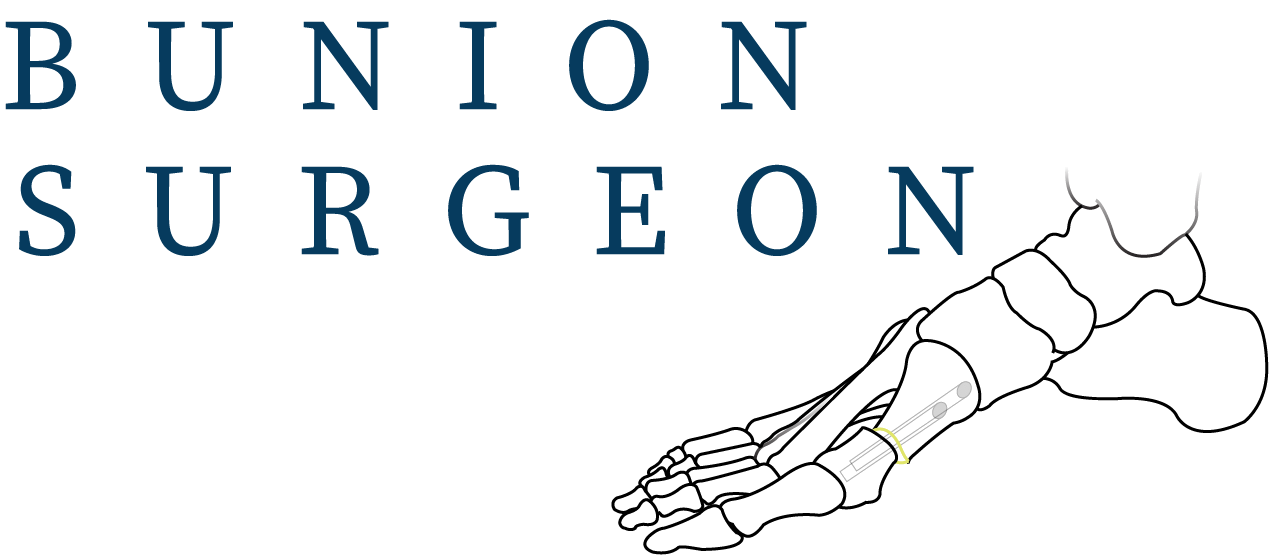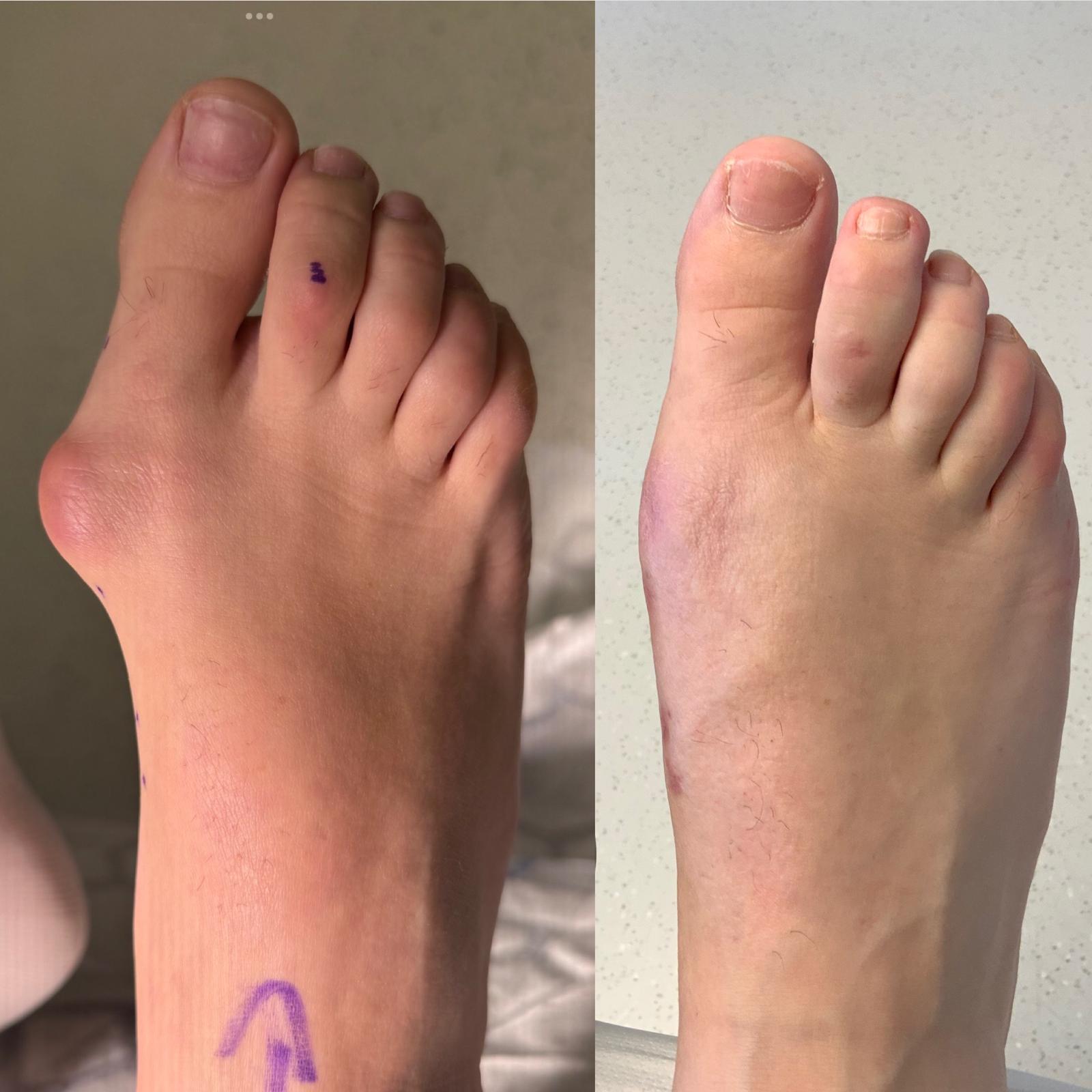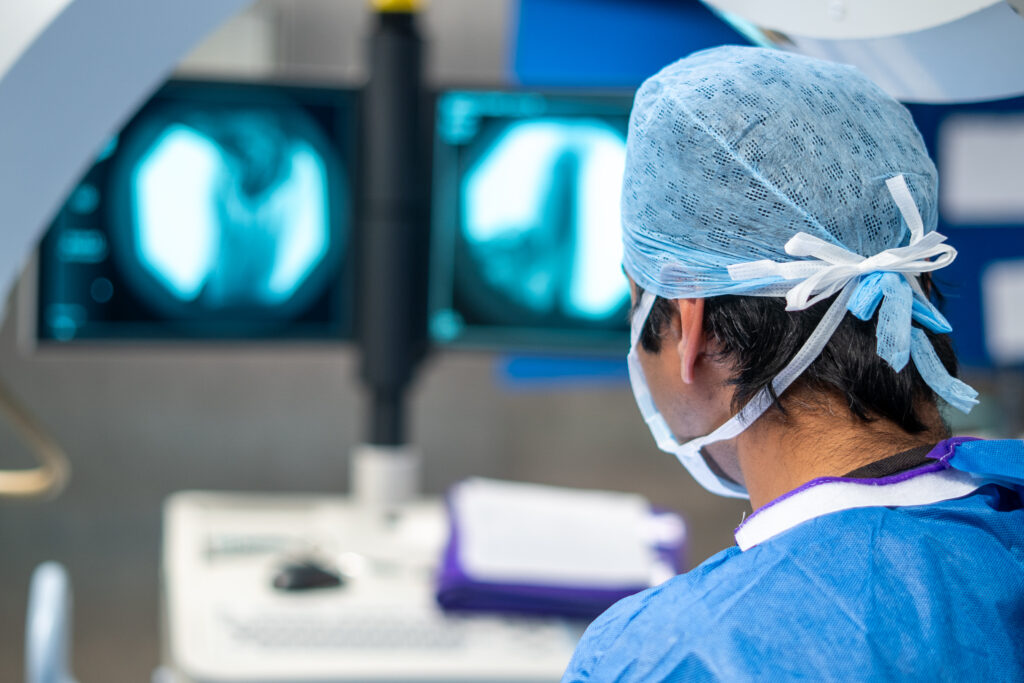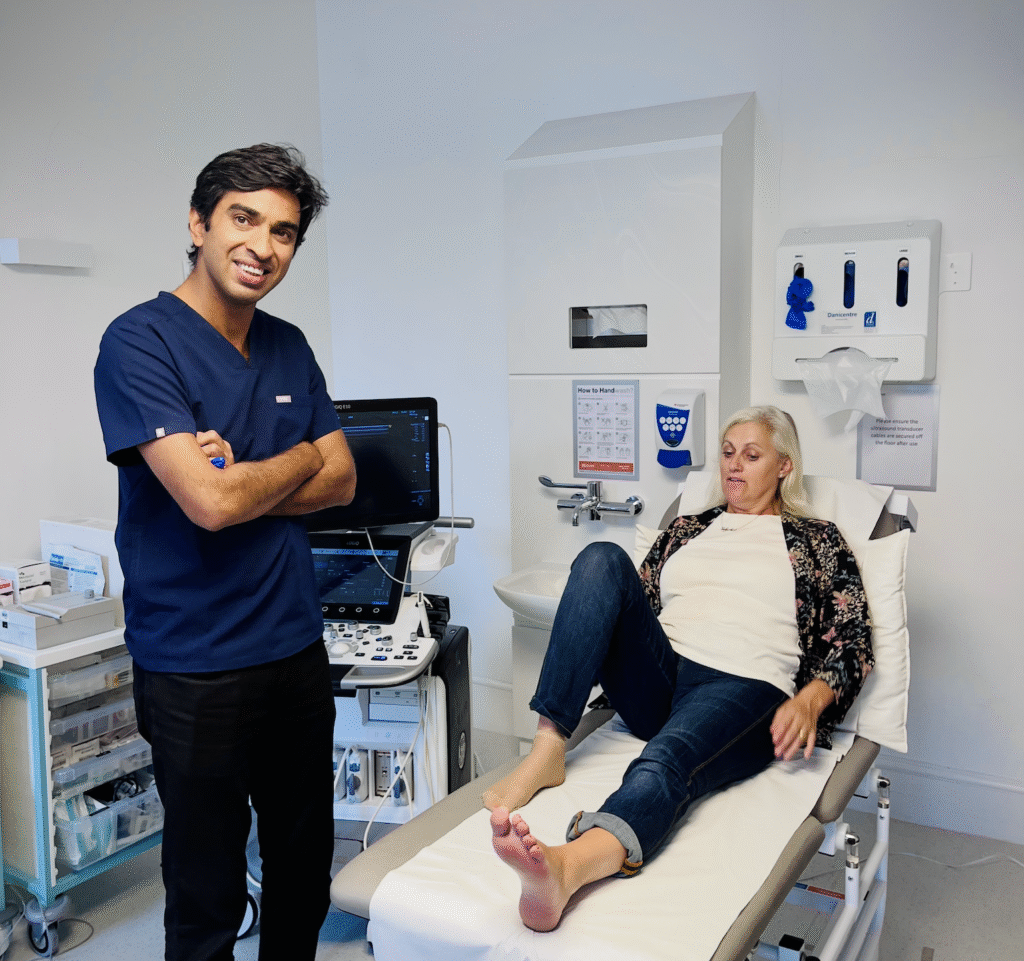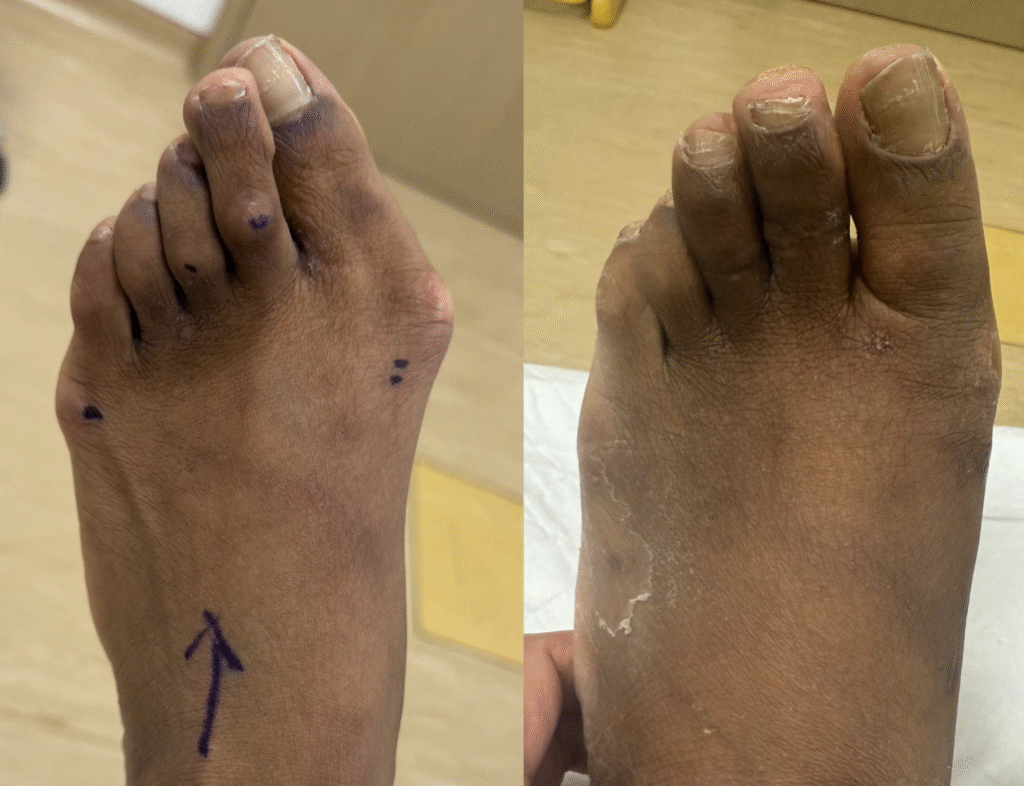Bunion surgery is a surgical procedure that corrects a common foot deformity that presents in a quarter of the population equally in men and women. The deformity involves the first metatarsal bone and proximal phalanx bone of the big toe, causing a gradual dislocation of the joint and a prominence of the metatarsal head toward the inside leg and widening of the forefoot.
Over time, it causes instability of the forefoot with pain and poor footwear fitting. It can start to cause deformities of the adjacent toes, such as the second hammertoe deformity, which is commonly linked with progressive bunion deformities. Furthermore, due to the fact that the joint is not aligned well, there are ensuing arthritic changes within the big toe joint that result in long-term cartilage damage.
Interestingly, a bunion is the only deformity that, as humans, we carry in a quarter of the population, which is unique in itself, whereas no other part of the body possesses such commonality in its deformed structure.
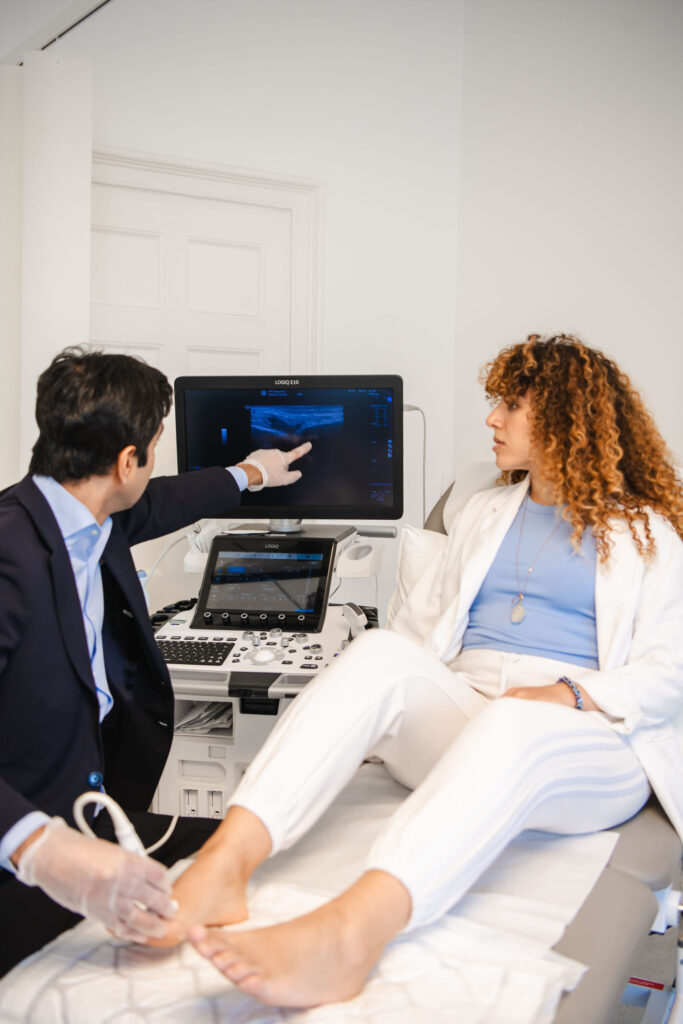
What types of bunion surgeries are there?
There are over 200 described bunion surgeries, and in more recent years it’s been accepted that a good bunion operation would involve cutting and resetting the bones and holding them with screw fixation in a better aligned position, allowing the bones to heal. In the past, bunion surgery had a poor reputation because a cast or bandage was used to hold bones together, and this would cause delayed healing and prolonged swelling and pain and disability.
More recent techniques have involved resetting the bones using internal screw fixations made out of titanium, which provide more stability, allowing weight bearing and predictable outcomes. For many years, especially the last two decades, the scarf and Akin operation became very popular because it had predictable outcomes, allowed correction of significant deformities, and had a low recurrence rate. Many foot surgeons around the world became accustomed to performing this procedure routinely, and it became the gold standard in
Keyhole Bunion Surgery
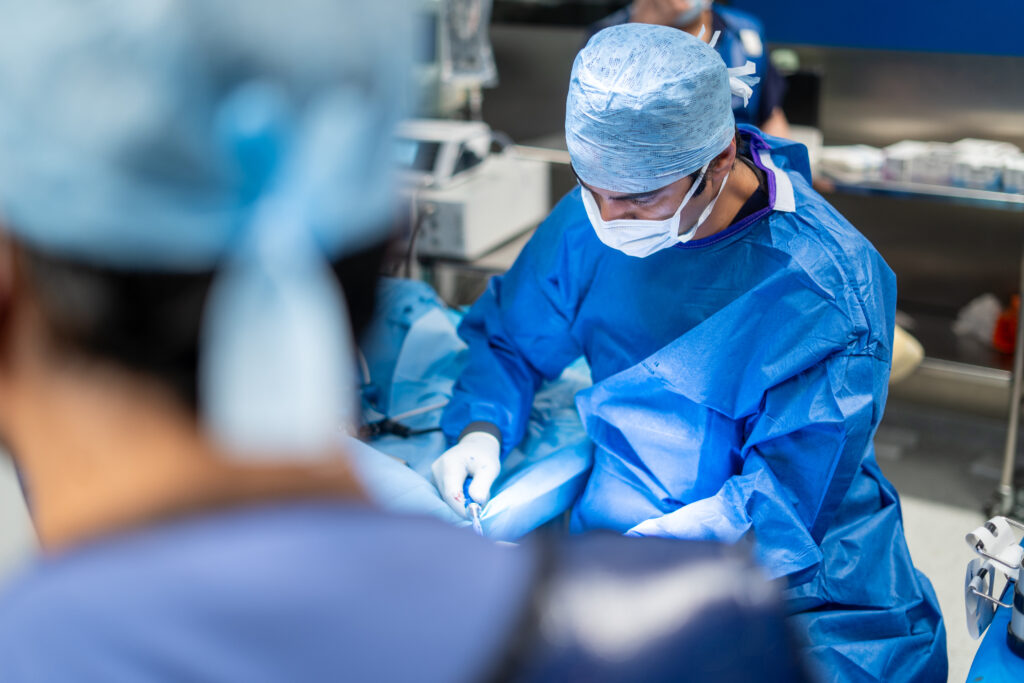
However, keyhole bunion surgery has gained resurgence, especially with the development of new bone-cutting burs, which are used to cut the bone through little holes rather than opening the inside of the foot through a large incision. And the quality of these has improved to the extent that accurate cutting of bone can be performed under X-ray guidance and the newer technology in titanium screws that allows stability of the bone fragments once they could cut through these small holes again without opening the joint.
The overall benefits of keyhole bunion surgery have now been documented, as they provide excellent surgical outcomes in terms of correcting large deformities. There is minimal, if any, postoperative pain. It can be performed as a day case, you are walking on it straight away, albeit 10 to 15 minutes an hour for the first two weeks, to allow for swelling to reduce. There’s much less swelling and much less risk of complications such as wound problems and infections, and because you are mobilised early, that reduces the risk of clots. There is also reduced risk of joint stiffness, ensuring that you can return, especially women, can return to heels and all sports, including running, a few months down the line.
About Kaser Nazir, the bunion surgeon
I am one of the few surgeons in the United Kingdom who has performed a significant number of these operations. I have to date performed over 450 operations over the last four years using the eyehole surgery technique. I have honed my skills to ensure that the deformity can be corrected fully and that the recurrence rates are low and the complication rates of even screw removal, which were considered high in the initial stages.

I have a passion for minimally invasive bunion surgery, as my main concern with any foot surgery has always been the amount of postoperative rest and rehabilitation that has been required in the past. Whereas I can comfortably send people back to a desk job within 7 to 10 days, and they could commute to work in two weeks. I can also ensure that patients can return to gentle sports at three to four weeks and high-impact sports at eight to ten weeks. Furthermore, my patients can return to high heels at three to four months postoperatively without any problems.
Although keyhole bunion surgery allows patients to remain mobile throughout the whole process, whereas traditional surgery required you to rest for a six- to eight-week period, the bone healing will still take six to eight weeks, and therefore there is also some caution required in terms of mobilisation, and this is where specialists such as myself will carefully advise you on the whole process as to what you can and can’t do, taking into account your individual needs and requirements from both an occupational and lifestyle perspective.
I particularly pay interest to individual lifestyle requirements, as people may have young children, may have jobs that require standing for long periods, or may require an hour or two of commuting or driving, and therefore, we can tailor the operation and recovery to suit those patients and make adaptive changes with different types of sandals or prostheses to help them recover predictably.
Screws and bunion surgery
People often ask me as to why we use screws. It is well known that when you do not use screws, you are allowing the bones to heal in an uncontrolled fashion, and I have seen cases where there is the deformity or the elevation of the metatarsal head where there are only a few degrees of error that are allowed in foot surgery. Margin of error is very low, and then people develop lifelong problems with pain and all other parts of their feet. I want to leave the patients in a position where, on the table, when they’ve had their operation, the bone stays in that position and heals in a predictable functional alignment.
The titanium screws do not go off at airports; they are within the bone, and they do not irritate skin. In a very small percentage of people where they do cause irritation or do back out, then we do remove them, but this does not affect the overall outcome of the operation because the bone is healed once we plan to remove them.

If you are considering it, please contact our clinic, and we will arrange for either a phone or video consultation or a face-to-face. We’ll arrange some X-rays to look at the quality of your bone, your joint, and your suitability for the operation. We will counsel you carefully through the whole process. Please watch our YouTube channels for advice, and we look forward to helping you with your bunion deformities.
Free Initial Bunion Consultation with Harley Street Expert Surgeon
For a limited time, you can book a complimentary initial bunion chat with leading consultant surgeon Mr. Kaser Nazir at Harley Street, London. Visit our Complimentary Initial Bunion Consultation page and act now.
This is a rare opportunity to meet face-to-face with one of the UK’s most respected bunion surgeons, specialising in minimally invasive bunion surgery. Best of all – it’s completely free.
To secure your place:
- Visit our Complimentary Initial Bunion Consultation
- Join the waiting list for your free consultation
- Take your first step towards pain-free feet
Final Thoughts
If bunions are affecting your comfort, mobility, or confidence, now is the perfect time to seek expert advice – without the usual consultation fee.
This complimentary initial bunion consultation with Mr. Kaser Nazir on Harley Street is your chance to:
- Meet a leading bunion surgeon face-to-face
- Learn about advanced minimally invasive techniques
- Start your journey towards healthier, pain-free feet
✨ Don’t miss this rare opportunity. Book your place on the waiting list today – before all free slots are gone.
